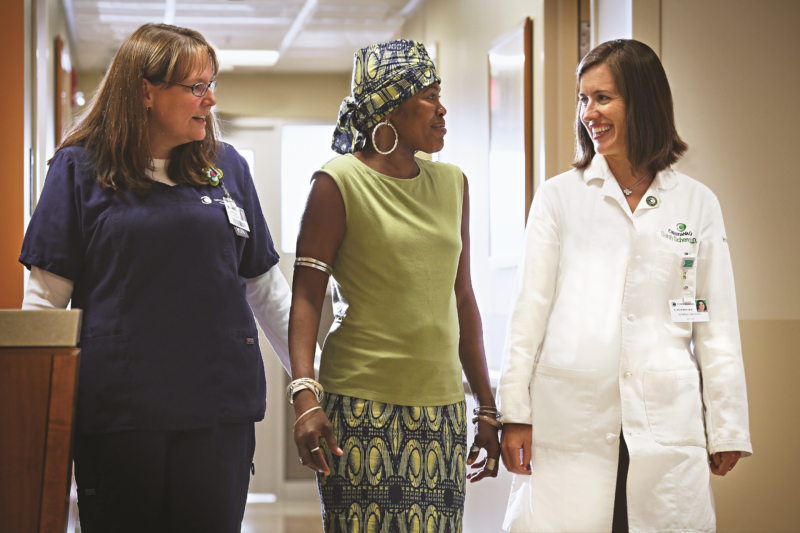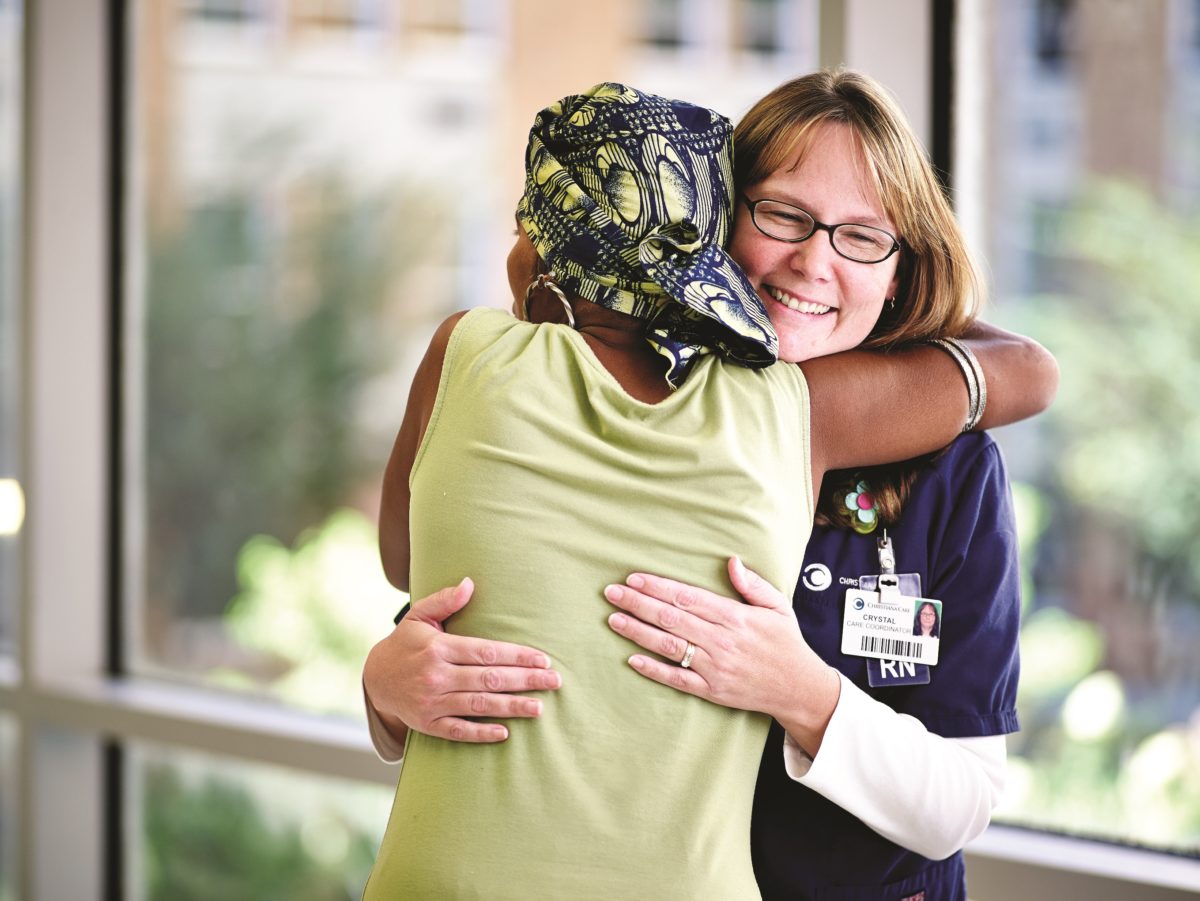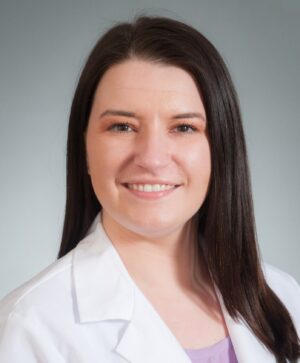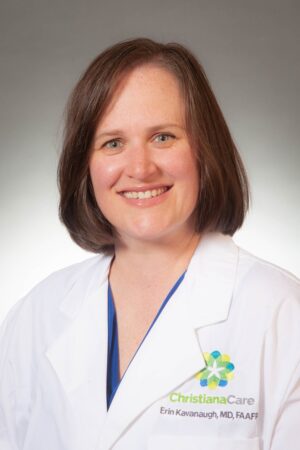Glennis Fistzgiles has high blood pressure. She is anemic. She has asthma and uses an inhaler to help her breathe. Her hip was damaged by avascular necrosis, which occurs when blood flow to a bone is reduced, and she needs a joint replacement.
For years, she relied on the Emergency Department when she got sick. Now, she is connected to caring, expert partners in her health who are keeping Fistzgiles out of the hospital through an innovative, affordable model of care.
“She is a shining example of how we can improve population health through high-quality primary care,” said her physician, Sarah Schenck, M.D.
Population health addresses the health outcomes of a group of individuals. The population can be a neighborhood, employees, an ethnic group or any other defined group. In Fistzgiles’ case, the population is high-risk patients, defined as individuals who are dealing with multiple illnesses or medications, or may have been hospitalized numerous times.
For patients like her, a visit with her doctor is seldom routine.
“Now we are at the point where we can replace your hip,” Dr. Schenck told Fistzgiles during a recent appointment. “After that, you’ll be feeling much better and be able to walk more.”

Dr. Schenck connected her with a pulmonologist in the community, who will make sure her lungs are strong enough for anesthesia. She ordered a hip X-ray that will be forwarded to an orthopaedic surgeon. She noted that it is time for her to get a tetanus shot and a mammogram.
Months ago, the 54-year-old mother of five was much sicker. She had a large abdominal abscess. There was a suspicious spot on her lung. She was hospitalized for two weeks.
To help keep her out of the hospital, Fistzgiles was enrolled in a program a called Ambulatory ICU, which includes short-term intensive nursing follow-up.
Crystal Pollock, RN-BC, her care coordinator, makes her appointments with Dr. Schenck, as well as specialists and other resources in the community. She arranges for tests and transportation. And she calls Fistzgiles often to remind her of upcoming appointments, make certain she understands her medications and answer any questions.
“With so many doctors and follow-ups to coordinate, we were concerned that Glennis would be lost in the shuffle,” Pollock said.
The primary care team at the Rocco A. Abessinio Family Wilmington Health Center at Wilmington Hospital is enhanced with a pharmacist, a social worker and a behavioral health specialist to seamlessly connect patients who need extra help with care. Dr. Schenck is chief of the Division of Ambulatory Medicine, Section of General Internal Medicine, and medical director of the Wilmington Adult Medicine Practice.
“We are Glennis’ health care team, and Dr. Schenck is the quarterback,” Pollock said
Health problems have taken a toll on Fistzgiles. She lives with chronic pain, making it difficult to walk the nine blocks from her home to Wilmington Hospital. She has been unable to work since 1999.
The new model of care is proving to be a game changer. It has been almost a year since Fistzgiles was discharged from the hospital. She has not been readmitted or required care in the Emergency Department since. She feels better than she has in years. “Now I have Dr. Schenck and Crystal to keep me on track,” she said.
Treating her abdominal abscess required six weeks of intravenous antibiotics. Pollock coordinated infusion specialists to go to her home to change her dressings and educate her husband on administering the medications.
It’s the care coordinator’s job to keep up-to-date with all the resources in the health system and the community, and to link patients with care they value. Before Fistzgiles leaves the office, Pollock gives her a printout with a list of the appointments she has made for her.
“Afternoons are still best for you, right?” she asked.
“Yes, thank you,” Fistzgiles replied. “I truly appreciate your help.”
Fistzgiles helps, too, by partnering with the team. After many years of smoking, she was able to kick the habit. Dr. Schenck prescribed medication to get her over the rough patches and explained to her that giving up cigarettes would help her to heal faster.
If she has a concern about her health, Fistzgiles is proactive. She doesn’t wait for a small problem to become a big problem.
“When she needs something, when she has a question, she calls me and we get an answer for her right away,” Pollock said. “There is a trust there.”



